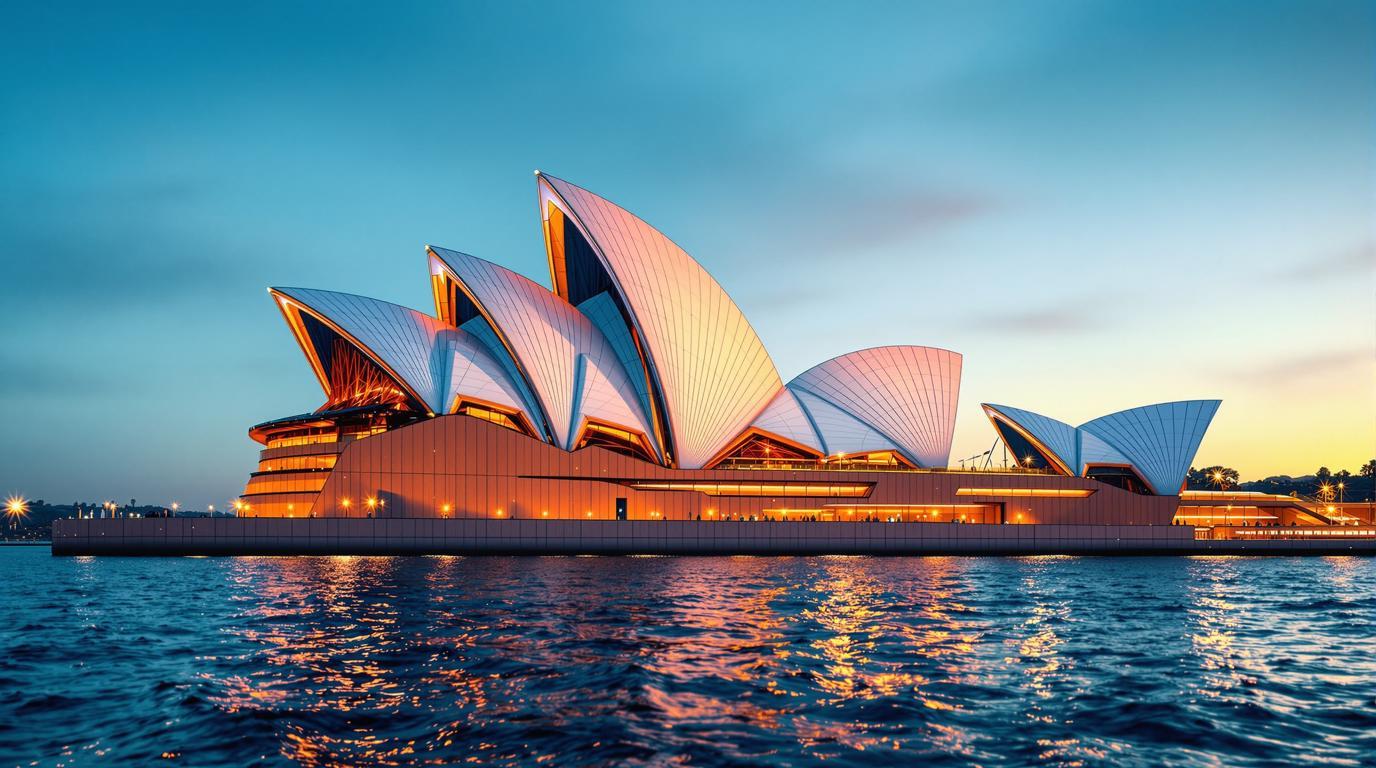Sydney’s glittering harbor reveals a structure so visually striking that it’s been mistaken for a fleet of magnificent ships with billowing sails. The Sydney Opera House isn’t just a building – it’s a masterpiece that forever changed architectural possibilities when Danish architect Jørn Utzon unveiled his revolutionary vision in 1957.
The sail-shaped marvel that almost wasn’t built
Few realize that Utzon’s design was initially discarded by competition judges until renowned architect Eero Saarinen championed it from the rejection pile. This iconic structure in New South Wales took 16 years to complete – far longer than the estimated 4 years – and exceeded its budget by more than 1400%.
The Sydney Opera House stands as the greatest building of the 20th century. It changed the image of an entire country.
The gleaming white sails – actually 2,194 precast concrete sections covered with over one million tiles – appear to float above the harbor. This engineering miracle required innovations that didn’t exist when construction began, forcing engineers to develop entirely new methods.
A UNESCO treasure beyond its architectural shell
While tourists flock to photograph its exterior, the Opera House offers immersive experiences inside its walls. The standard one-hour tour takes visitors through multiple performance venues, though be prepared for approximately 300 stairs along the way.
For those with mobility concerns, a dedicated Mobility Access Tour provides a step-free alternative. As Sydney local Melissa Davies shares, “Many visitors don’t realize there are specialized experiences like the Backstage Tour that takes you into usually off-limits spaces like rehearsal rooms.”
Australia’s cultural heartbeat
Beyond architectural wonder, this UNESCO World Heritage site pulses with artistic energy across seven performance venues. The Concert Hall houses the world’s largest mechanical tracker-action organ, featuring 10,154 pipes that took a decade to design and build.
The Northern Foyer’s glass walls frame breathtaking views of Sydney Harbour Bridge, creating what many consider Australia’s most spectacular intermission space. For an unforgettable sunset experience, time your visit to catch golden hour when the building’s sails glow amber against deepening blue waters.
Culinary experiences with world-class views
The Opera House’s dining options range from casual to refined. Opera Bar provides harborside cocktails while Bennelong Restaurant, housed within one of the concrete shells, offers sophisticated Australian cuisine. The Tour & Dine Experience combines cultural and culinary exploration for the complete Sydney Opera House adventure.
Every time I perform here, I’m struck by how the building itself seems to amplify not just sound, but emotion. It’s unlike any other venue in the world.
Hidden spaces most tourists miss
Few visitors discover the secret boardroom balcony accessible only through specialized tours. This exclusive vantage point offers perhaps the most spectacular harbor view in all of Sydney – a photographer’s dream and one of the Opera House’s best-kept secrets.
The rehearsal spaces, normally closed to the public, reveal the working heart of this cultural institution. Here, amid the pristine public areas, you’ll find the authentic artistic soul that keeps the Opera House vibrant after five decades.
When nature meets architecture
The Opera House creates its most dramatic impressions during weather events. Watching storm clouds gather behind those white sails or seeing them illuminated against a rain-washed sky provides photographers with once-in-a-lifetime shots.
For the ultimate experience, visit during Vivid Sydney when the sails become a canvas for spectacular light projections. These annual installations transform Utzon’s masterpiece into a dynamic, color-shifting wonder that reflects across harbor waters.
The Sydney Opera House transcends mere landmark status – it’s a living symbol of human creativity that continues to inspire awe decades after completion. While photographs capture its exterior beauty, only by experiencing its spaces firsthand can you truly appreciate how this architectural wonder embraces both art and nature in perfect harmony.
